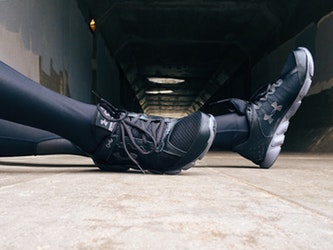
There are many ways to approach high-intensity interval training. You can do it while cycling, you can engage in it at the gym, or you can have a run on the treadmill and tweak the settings to achieve the best results. The main advantage of HIIT training on the treadmill is that it can be done in the comfort of your own home.
How to Recover after HIIT
If you are looking for a modern treadmill that is highly effective in low impact exercises and can help you burn calories while keeping the experience enjoyable, the Bowflex Treadclimber TC100 is the at-home workout machine for you. Its major advantage is its user-friendly settings that allow you to personalize every single HIIT session and plan the recovery. If you want to read more about Bowflex Treadclimber TC100 follow the link for a full review by the experts at TopFitnessReview.net.
Besides getting a hefty dose of physical activity, it is also important to focus on post-workout recovery and give your muscles time to unwind and expand naturally. In this way, you will maximize your performance and lower injury risks as well. To help you with that, here are five steps you should take to make the most out of a HIIT recovery period.
1. Alternate Recovery Methods
The recovery period involved in high-intensity interval training is split into two different categories, namely active recovery, and passive recovery. The former is trainers’ favorite, as it reduces lactate buildup faster, which increases your overall performance. Nevertheless, the latter has its advantages as well, and should not be ignored.
Passive recovery gives your muscles time to expand at a vigorous rate, which makes you less accident-prone during workout sessions. Therefore, a healthy way to approach things is by alternating between the two. In this way, you will avoid soreness, build brawn, and boost your endurance and strength levels higher than ever.
2. Keep Your Schedule Varied
Other than simply alternating between active and passive recovery, you can also try keeping your exercise schedule as varied as possible. For example, you can spend your recovery performing light workouts such as yoga, walking, or just throwing the Frisbee around in the park.
Then, on the days you engage in traditional high-intensity interval training, you can recover actively by planking or performing other more relaxing physical activities. At least one day per week should be dedicated to passive recovery. If you are a beginner that is just now building endurance, it is advisable to squeeze in at least two.
3. Consume Carbs Right Away
The effects of high-intensity interval training on the body don’t end when the workout does. In fact, 30 minutes afterward, it is still reeling in stress and heightening your metabolism. For this reason, this is the perfect time to load up on carbs. Your body needs to replenish its glycogen stores right away so that you can recover in a healthy way.
There are many food options in this case. Quinoa, berries, sweet potatoes, dark green leafy vegetables, oats, pasta, and rice are amazing sources of carbs that are best-consumed post-workout. Combine them with something that is rich in protein, such as eggs, Greek yogurt, lean cuts of meat, or cottage cheese, to maximize the outcome of your exercise.
4. Fuel Your Body after Exercise
Six hours after your daily dose of HIIT, the body is still feeling the effects of the workout. Insulin sensitivity is improved, which means that you can better process any type of fuel you consume. For this reason, consuming a hefty dinner is great for recovery, and it prepares you for the next day of hard work as well.
5. Never Skip a Rest Day
Finally, the best piece of advice we can offer you on HIIT recovery is to never skip a day dedicated to it. Even though you might feel like you can take three days in a row, what happens beneath the surface is a completely different matter. Pushing yourself too far over the edge can result in aching, muscle ruptures, and other unpleasant injuries.
The Bottom Line
There are many ways to approach high-intensity interval training (HIIT). You can HIIT train on a treadmill or on a bicycle, or you can join a gym and get a tailored workout. However, exercising shouldn’t be your sole focus. Recovery is just as important as it supports fat burning, it helps your muscles grow, and it boosts your metabolism as well.
In addition, engaging in both active and passive recovery regularly after HIIT workouts lower the risk of workout accidents. Skipping rest days can lead to soreness and muscle ruptures, which is why you should always give your body the necessary time to bounce back.
About The Author:
As a prestigious member of The Fitness Trainer Academy in Houston, with a vast experience in fitness coaching, nutritional advice, as well as wellness knowledge, Katherine Roberts is behind the ‘fitness’ word. She’s a guru of everything related to active lifestyle and personal development, especially when it comes to keeping up to date with the latest industry’s trends. More of Kathy’s work is available on Facebook and Twitter.



![[Infographic] What Steps to Take After a Car Accident Infographic](https://www.safeandhealthylife.com/wp-content/uploads/2017/03/Infographic.png)
